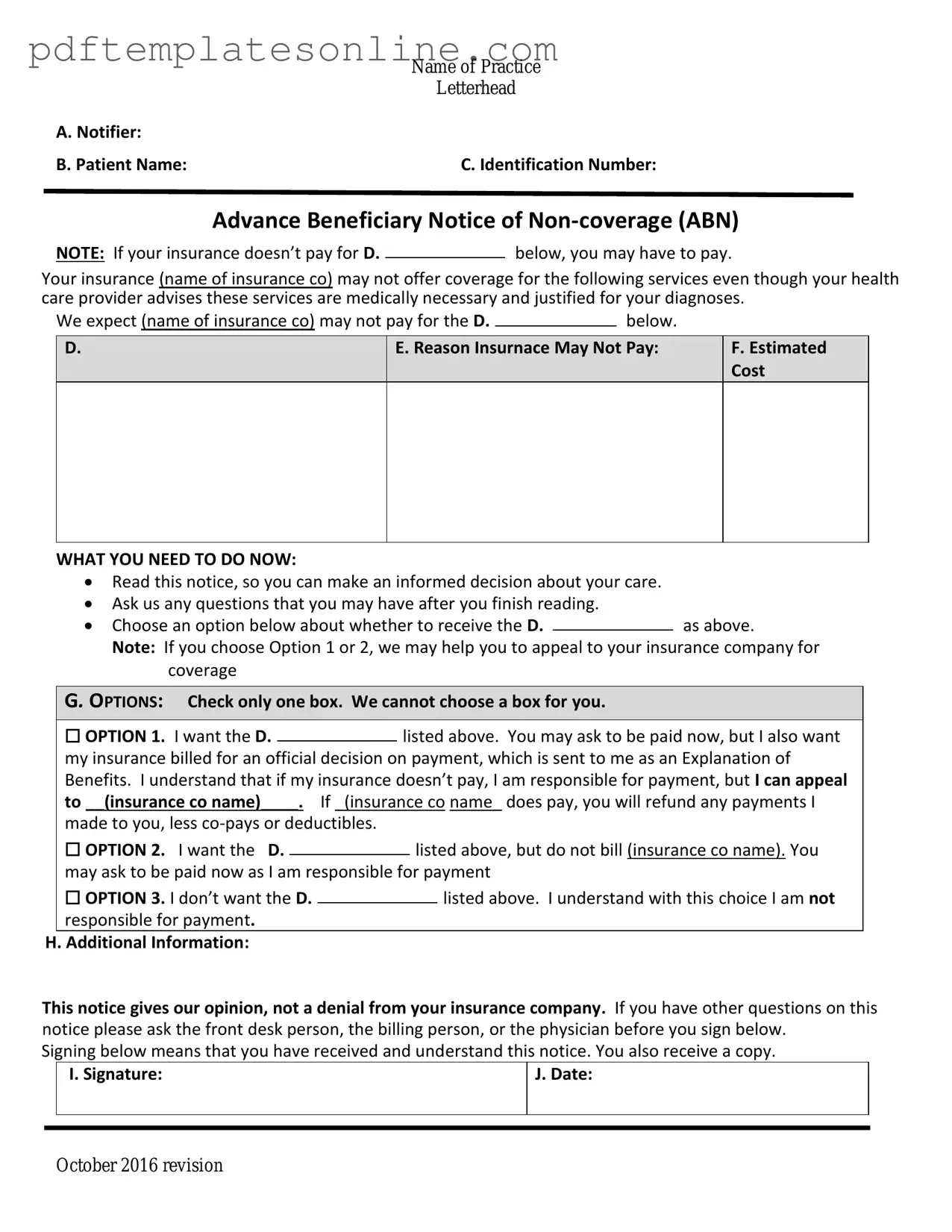Blank Advance Beneficiary Notice of Non-coverage Form
The Advance Beneficiary Notice of Non-coverage (ABN) is a crucial document that informs Medicare beneficiaries when a service or item may not be covered. This form allows patients to make informed decisions about their healthcare costs and options. Understanding the ABN can help beneficiaries navigate potential out-of-pocket expenses effectively.
Access Advance Beneficiary Notice of Non-coverage Editor Now
